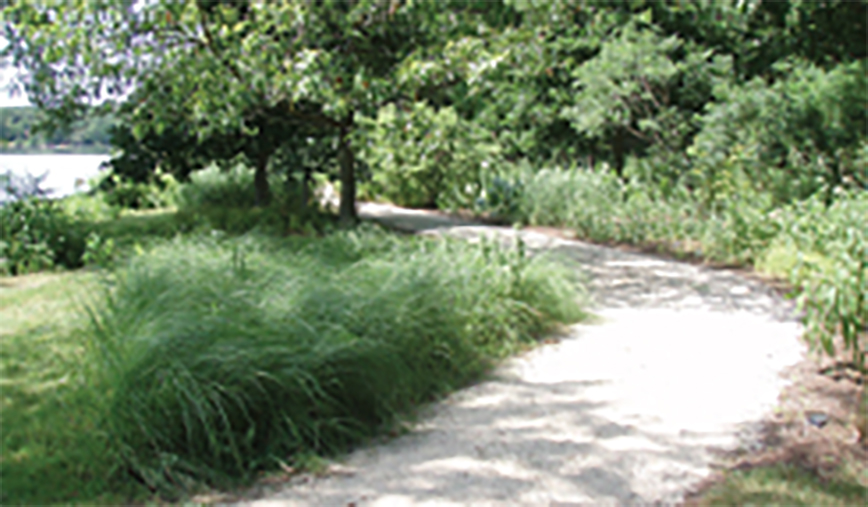June 16, 2015
Positive Nature
It’s only a short loop, but the path in the Native Plant Garden at the Pottawatomie Community Center can lead to a journey of discovery.
When was the last time you got something more than you bargained for … in a good way?
I don’t mean to brag but, ahem, that sort of good fortune happens just about every day when you’re a naturalist.
Take Thursday, for instance. I had gone to the Pottawatomie Community Center for a meeting, which turned out to be 40 minutes of exactly what I’d expected – a review of minutes, a few notes on policy, a little discussion of procedure. It was afterward that the day improved dramatically.
I’d headed out to the Native Plant Garden and was making my way toward the water willow – the main reason for my visit – when I heard the nasal call of a blue-gray gnatcatcher. Two blue-gray gnatcatchers, actually, and they were busy scolding something. Me? Maybe. I let them go about their business and continued down the trail toward the river.
As I rounded a bend in the path, a couple of other birds caught my ear. A Baltimore oriole was singing, his notes crystal clear despite the strong breeze. And an indigo bunting was putting his heart and soul into his song, the pattern of which matches the words, “Fire! Fire! Where? Where? Here! Here! See it! See it!”
The bunting remained hidden, but the oriole flitted from branch to branch in the big bur oak, his flame-orange breast flashing like the blaze the bunting was so fired up about.
I looked toward the river and spotted the water willow ahead. But I also saw a double-breasted cormorant flying low above the water, and two cedar waxwings – my absolute favorite birds! These two were using a river birch as a launching and landing pad as they flew after and gobbled up the insects that were plentiful near the tree.
Just ahead was the water willow; ostensibly my mission would soon be complete. But, wouldn’t you know, I saw a pair of eyes peering out from the water at the base of some swamp milkweed. A bullfrog the size of my fist was watching me, probably trying to figure out if I posed any sort of risk.
I didn’t, but he couldn’t have known that – especially when I stuck my camera phone within inches of his face. After a couple of seconds of contemplation, and two clicks of the camera, he vanished, leaving me with one decent shot of a frog and another so-so pic of the ripples he left behind.
The water willow was beckoning, only a few feet away, but then… what should come swimming along but three blackstripe topminnows! These fish are a common nongame species in our area, and even though folks refer to them as “just” a minnow, their markings really are striking. A dark (OK, black) line along each side helps them blend in to their surroundings, and a white dot on the top of their head makes them easy to identify – a real plus for all us non-ichthyologists.
The three were foraging near the surface, or top, of the water (hence the name topminnow), and they soon were joined by four more. I leaned over, hoping for a closer look, but instead must’ve spooked them, because all I saw was seven tails disappearing into the dark river depths.
Finally, I was left with only the water willow before me. I checked out the leaves – opposite – and looked at the buds – not anywhere near blooming yet. I also took a look at the water level it was growing – pretty high because of our recent rains. And then I was done.
A five-minute errand turned into 15 minutes of pure delight, a nice distraction in the middle of an otherwise busy day.
Think you’d like a little distraction of your own? Head over to Pottawatomie and look for the wooden Native Plant Garden sign by the south parking lot. (A sign that, incidentally, features hand-forged ironwork by the district’s own John Kish.) You just might get more than you bargained for … and that’s a good thing.
• Pam Otto is the manager of nature programs and interpretive services for the St. Charles Park District. She can be reached at potto@stcparks.org or 630-513-4346.

